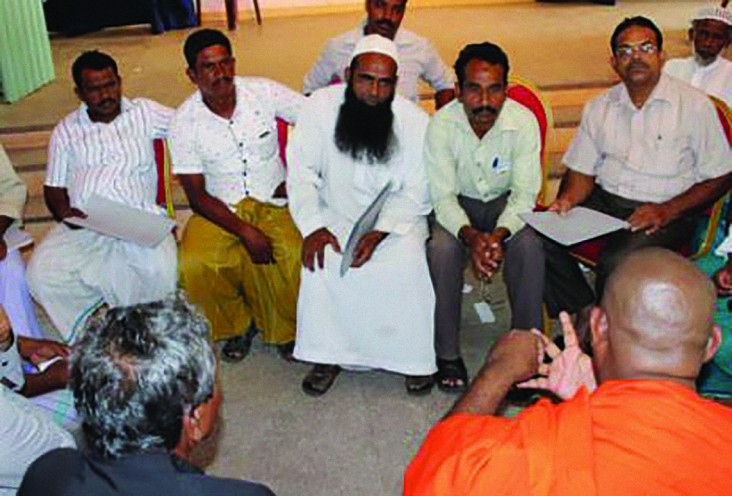- Work With USAID
- How to Work with USAID
- Organizations That Work With USAID
- Find a Funding Opportunity
- Resources for Partners
- Careers
- Get Involved
Speeches Shim

Background
Sri Lanka has a diverse society with ethnic communities, including the Sinhalese (75 percent), Sri Lanka Tamil (11 percent) and the Muslim community (10 percent). Several years after its 26-year war, Sri Lanka continues to be a divided country. Mistrust between communi-ties continues.
The project aims to promote district level mechanisms to reduce religious and ethnic tensions through strengthened District Inter-religious Committees (DIRCs). DIRCs include leaders from all faiths in the region, as well as civil society, media, youth groups, women’s organization leaders, and government officials. Project activities with DIRCs included:
- Training for DIRC members, including on non-violent communication, conflict sensitivity, pluralism and diversity, political analysis, early warning and mediation, media documentation, and referrals
- Establishment of community level communication mechanisms for each DIRC to maintain/update a record of issues
- Establishment of regular functions for DIRCs to mitigate inter-religious tensions and refer cases to relevant authorities for resolution
- Building networks between DIRCs and establish-ment of a National Level Inter Religious Committee (NIRC)
- Conducting provincial-level Truth Forums and then National Symposiums to share learning and experience from DIRC Truth Forums
- Conducting information dissemination campaigns on the UNHRC Resolution and the Truth and Reconciliation Committee (TRC) mechanisms across 9 districts (including distribution of at least 27,000 communication materials).
Faith-Based and Community Initiatives
The project focused on building the capacity of civil society leaders, including religious leaders of the DIRCs formed across the nine districts. This included building up horizontal and vertical networks between DIRC and other stakeholders to engage in community level conflict prevention. Topics discussed in DIRC meetings ranged from the influence of religious and ethnic extremists in harming community relationships, and issues pertaining to ethnic and political rights from different perspectives. Religious leaders representing all faiths showed an increased willingness to advocate towards peace and reconciliation and a desire to invite other religious leaders to join.
Results
DIRCs were active in mitigating community-level inter-religious disharmony. Across the three phases of the project, 105 issues were presented in total, of which 52 were taken on by DIRCs for mitigation. Out of those 52, 79 percent were resolved by the end of the project, with some interventions ongoing.
DIRCs also held workshops on transitional justice for local level politicians and other community leaders, publicized their efforts through the media, and shared their experiences at the National Symposiums organized in each phase of the project. In total, 154 DIRC meetings were conducted in the nine districts.
Some challenges during incidents of inter-religious tensions included the loss of some religious leaders from DIRCs, and a disheartened feeling among some members, especially after they received threats of physical harm. The NPC team worked to build support from other DIRCs and build new membership. Buddhist monks from DIRCs acted as a bridge to discourage threats of physical harm.
Conclusion
DIRCs provided a common platform for leaders of all religions in a community to come together, discuss, and share cultural values in order to improve communication between different groups. Their collective purpose of resolving points of tension unified these groups in their role as peace-keepers within their communities.

Comment
Make a general inquiry or suggest an improvement.